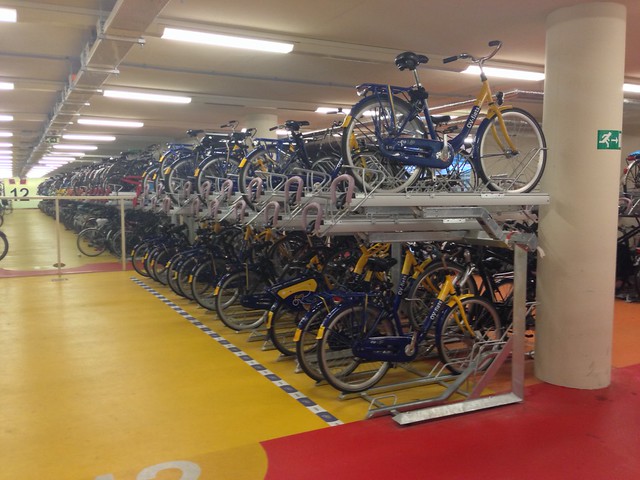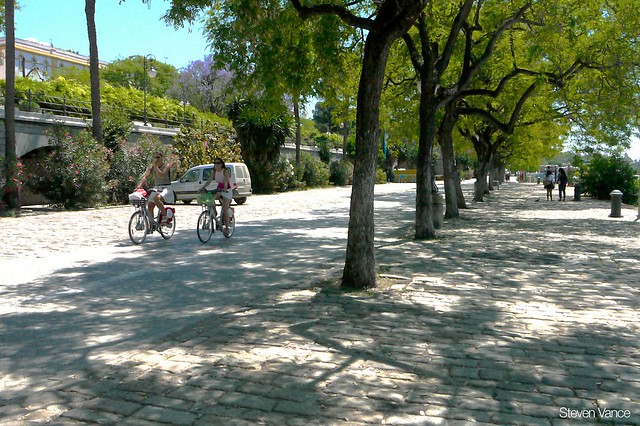Last month, I had the chance to use bike-share systems in two Dutch cities and Seville, Spain. The systems – OV-fiets in Rotterdam and Nijmegen and Sevici in Seville – differ from one another and from Chicago's Divvy system in several key ways. Together, they make for an instructive comparison about how our friends in other countries get around.
While most of the 400 bike-share systems around the world are primarily used for residents' brief, one-way trips around town, OV-fiets provides local transportation for short-term city visitors and workers, rather like an airport car rental service. It's run by the Dutch intercity train network, which largely restricts passengers from bringing their own bikes on board due to crowding. Members can get 72-hour rentals for about $4.70 per day, from about 250 locations across the small nation. The single-speed bikes include a built-in lock so you can use it all day, anywhere in the city. (OV-fiets requires a Dutch bank account, but I was able to try it thanks to a local friend who lent a membership.)

OV-fiets membership are most often linked to Dutch transit smartcards to check out bikes. It would be convenient to check out Divvy bikes in Chicago with your Ventra card, and it's technically possible because the two systems use similar RFID technology. It would be even better if you could travel around the country using the same membership, which B-Cycle and Zipcar both allow.
Sevici in Seville launched seven years ago, and was timed with the installation of dozens of miles of separated bike paths snaking through the city. It's run by JCDecaux, the outdoor advertising company that also manages Vélib' in Paris and CTA's bus shelters. Sevici is also cheap: they offer inexpensive weekly passes for $18.

Like Divvy, stations in Seville are a few blocks apart, with the highest density in the city center, but the bicycles themselves were in poor mechanical condition. Additionally, I frequently ran into problems with empty or full docks around the city, and had to pedal or walk to further stations on a couple occasions. Divvy excels at redistributing bikes, and their new sponsorship deal will hopefully sustain good maintenance and continued high availability.
Maintenance issues aside, I preferred the method Sevici has for casual users to check out bikes: users type a six-digit access number, a PIN, and the bike ID onto a metal keypad, which unlocks the bike. Divvy, on the other hand, has cumbersome kiosk software that requires users to repeatedly jab a touch screen, after which it prints out a new three-digit code every time.
Each of the three systems has its own key strengths. The bikes were a high point for OV-fiets, as they were well built and have a riding position style even more upright than Divvy. A reliable kiosk design and simple software are a key feature for Sevici. Divvy has a good rebalancing strategy, which has run into few of the challenges encountered by New York City and others.




